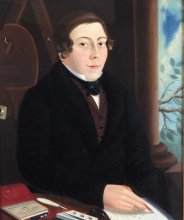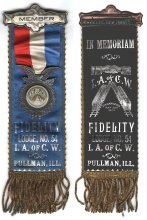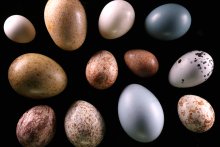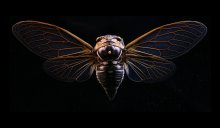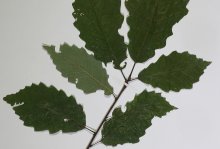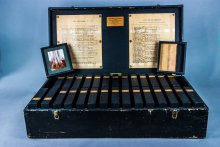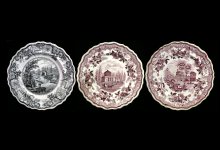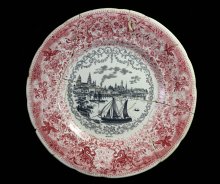Civil War Era (1848-1877)
The period that opened with the adoption of a new state constitution saw continued growth in agricultural and industrial production. The state’s population grew rapidly with settlers from other states but especially due to immigration from German states and Ireland. Growing debate over the role of slavery in the life of the nation raised tensions to a level that finally sundered the Union. Illinois’ own citizens, many of whom had settled here from the Upland South, were divided over the issue. As the home of Stephen A. Douglas, a national leader of the Democrats, and his skilled, Republican challenger in the form of Abraham Lincoln, Illinois was a crucial battleground during the decade that ended in war. The advent of photography would revolutionize the way we captured the harsh realities of war and forever changed the way we look at ourselves and the world. The state contributed mightily to the Union cause, providing its commander-in-chief numerous military leaders, more than 220,000 soldiers and sailors, and large volumes of agricultural and manufactured products.
Edward Richardson Jr. worked as an artist in Springfield, Illinois, from 1850 until his death in 1858 at the age of 31. He advertised himself in the local newspaper as a portrait artist and decorative painter.
Beautiful silk ribbon with badge, from a member of the Fidelity Lodge No. 54, I.A. of C. W. (International Association of Car Workers), Pullman, IL.
In the 1800s and early 1900s, before federal protections for all birds were established, egg collecting thrived as a hobby. Collectors bought, sold, and traded eggs with one another. In 1918, the Migratory Bird Treaty Act was established to stop the commercialization of birds, primarily because market hunting for restaurants and to provide feathers for the hat trade was decimating populations. As egg collecting slowly disappeared in the years following, many collectors gave their collections to museums.
The Prairie Cicada’s (Megatibicen dorsatus) sound is unique to the tallgrass prairie. Because much of the prairie was converted to farming and other uses before it could be thoroughly studied, we may never know what the cacophony of insect songs sounded like in this distinctive habitat. Many of those insects are now as rare as original prairie remnants. The Prairie Cicada persists in some of those remnants as well as in small railroad prairies.
Dwarf Chinkapin Oak (Quercus prinoides) is a shrubby, clone-forming oak native to eastern and central North America. In Illinois, Chinkapin Oak has been sometimes misidentified as Dwarf Chinkapin Oak, and a true Dwarf Chinkapin Oak plant has not been observed in the wild until recently.
The Greater Prairie Chicken (Tympanuchus cupido) once numbered in the millions in Illinois. At first, as the Illinois prairie was converted to farmland, prairie chickens grew in numbers. But as the ratio of farmland to prairie grew more lopsided, prairie chickens declined in number, leaving a small, remnant population on two preserves in southern Illinois.
Identification guidebooks put information about plant and animal species in the palm of our hands. This identification guide, however, is quite unique. Instead of a book, this field guide is a box. Local ornithologist Benjamin T. Gault created this portable guide to help him with his fieldwork.
This piece of rope was a souvenir from the hanging of Milton Jones in Mt. Carmel on October 11, 1850. Jones was sentenced to die for the killing of his employer, Joseph Miller, while they were traveling through Lawrence County in May 1849. The trial and execution took place in Wabash County, a change of venue from where the killing took place.
Although the “Baker’s Falls” plate was made by James and Ralph Clews, and the “Water Works” and “Race Works” plates were made by Job and John Jackson, all three plates are identical in diameter and apparently were made from the same mold. Note that they all share the same scalloped rim edged with raised dots. We don’t know if the Jacksons obtained the molds from the Clews pottery through gift, purchase, or outright theft. The Jacksons were nephews of James and Ralph Clews and trained at the Clews pottery in Cobridge, Staffordshire, England before setting out on their own.
Immigrating to a new land brought with it plenty of uncertainty. That may be why a German immigrant family brought items with them that reminded them of home. This transfer print plate, made in the style of Staffordshire, England potters, was actually made by Villeroy & Boch, a German pottery firm.
Pages






